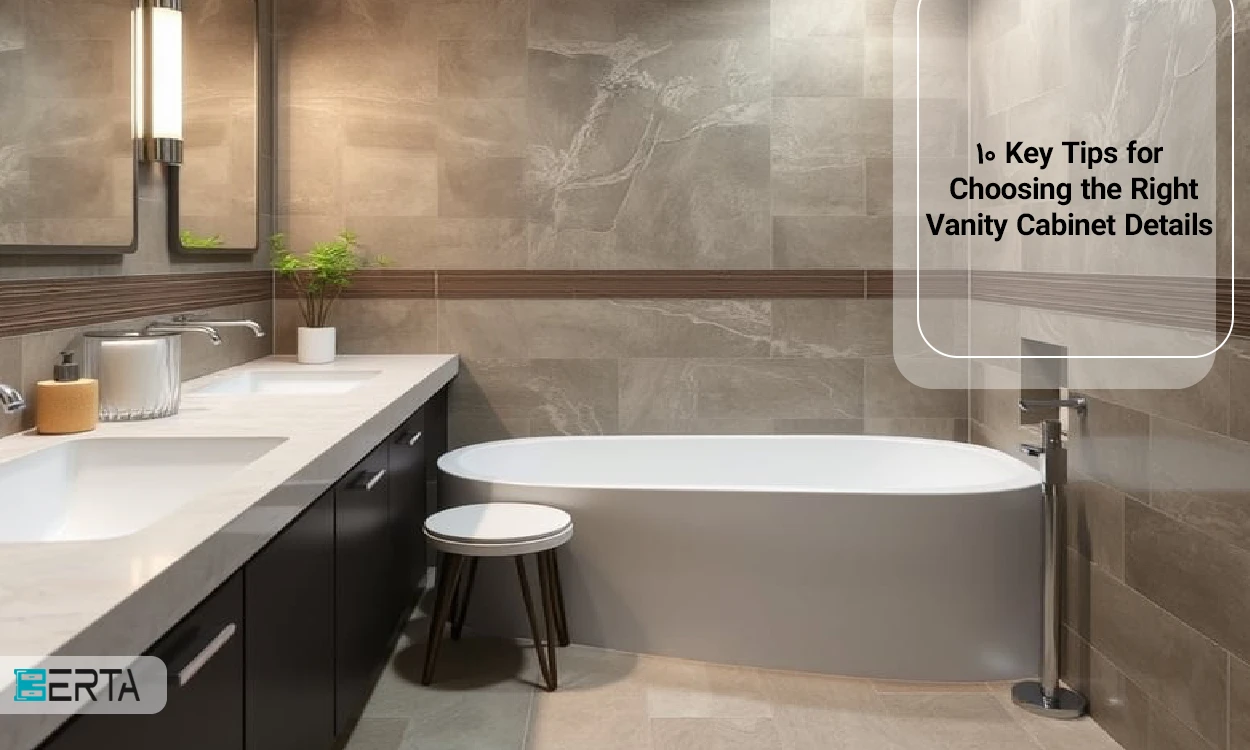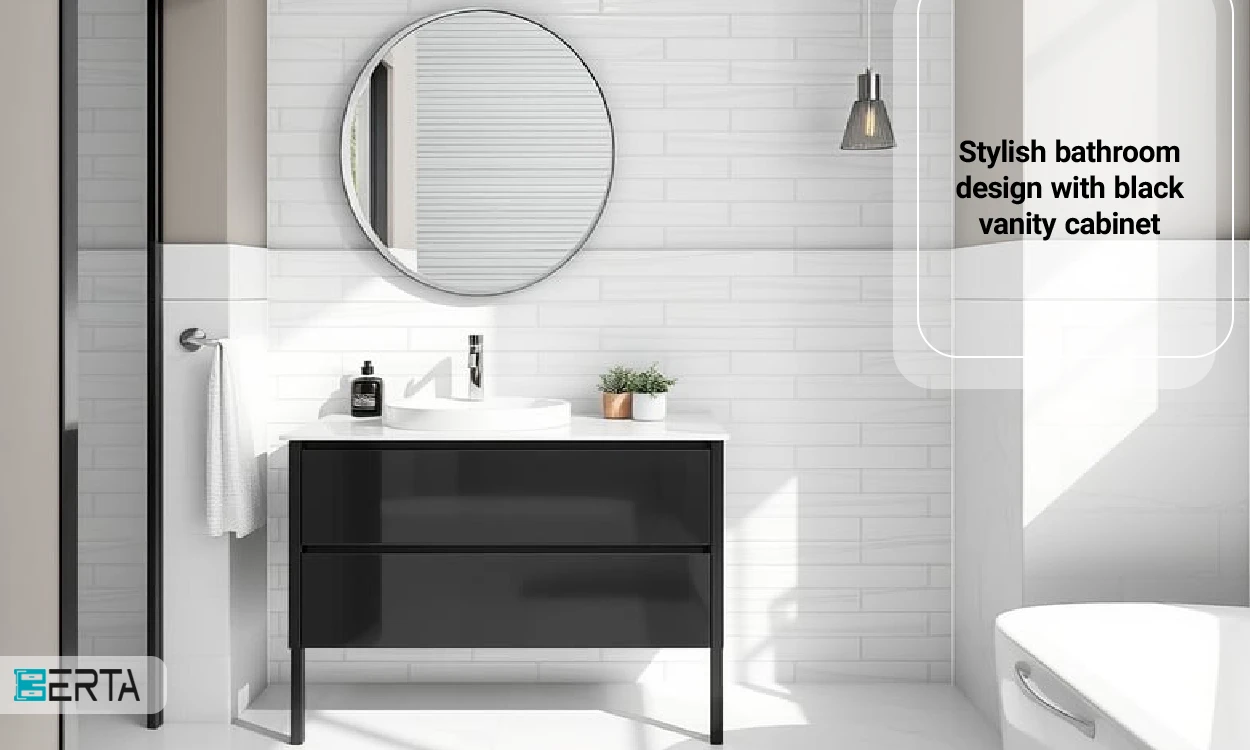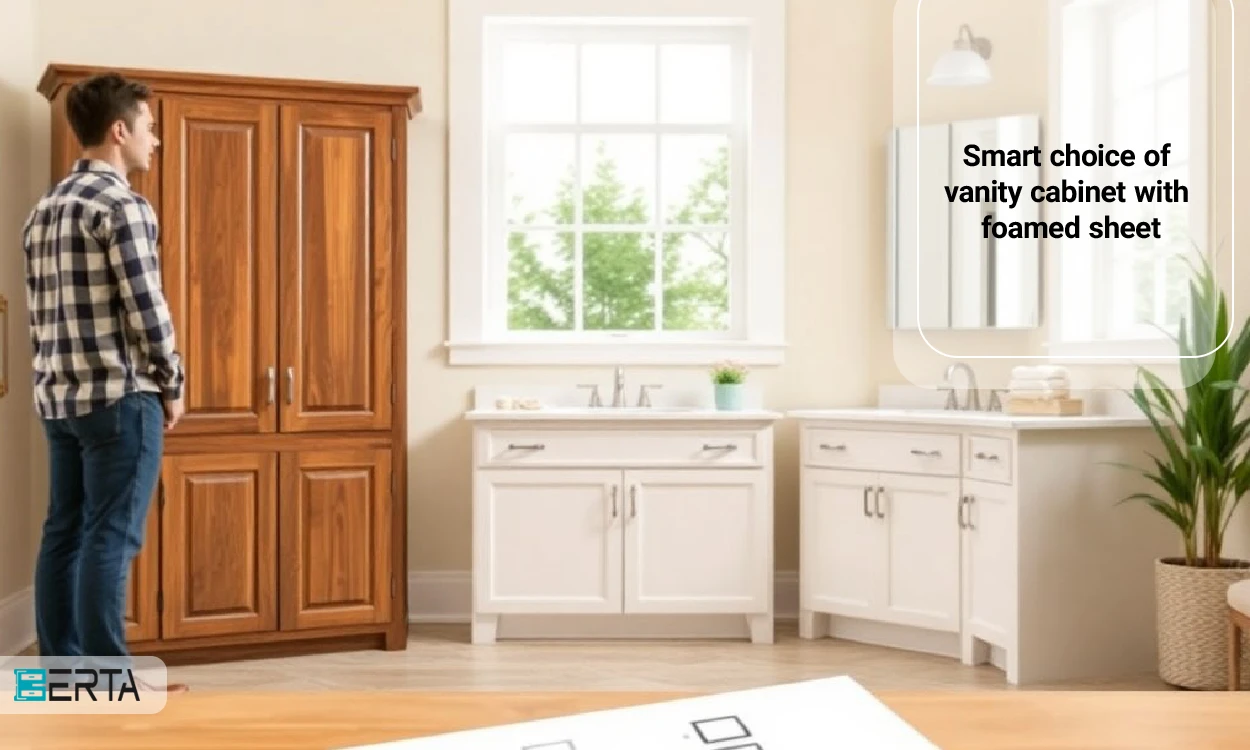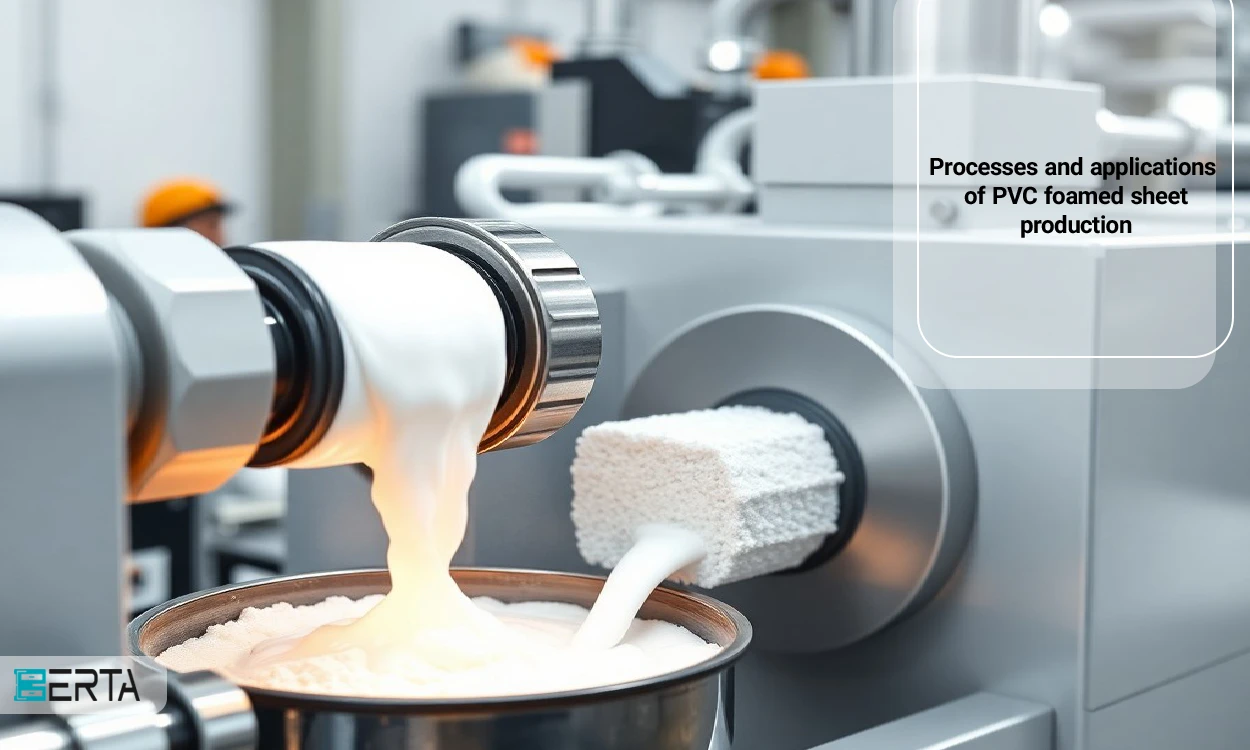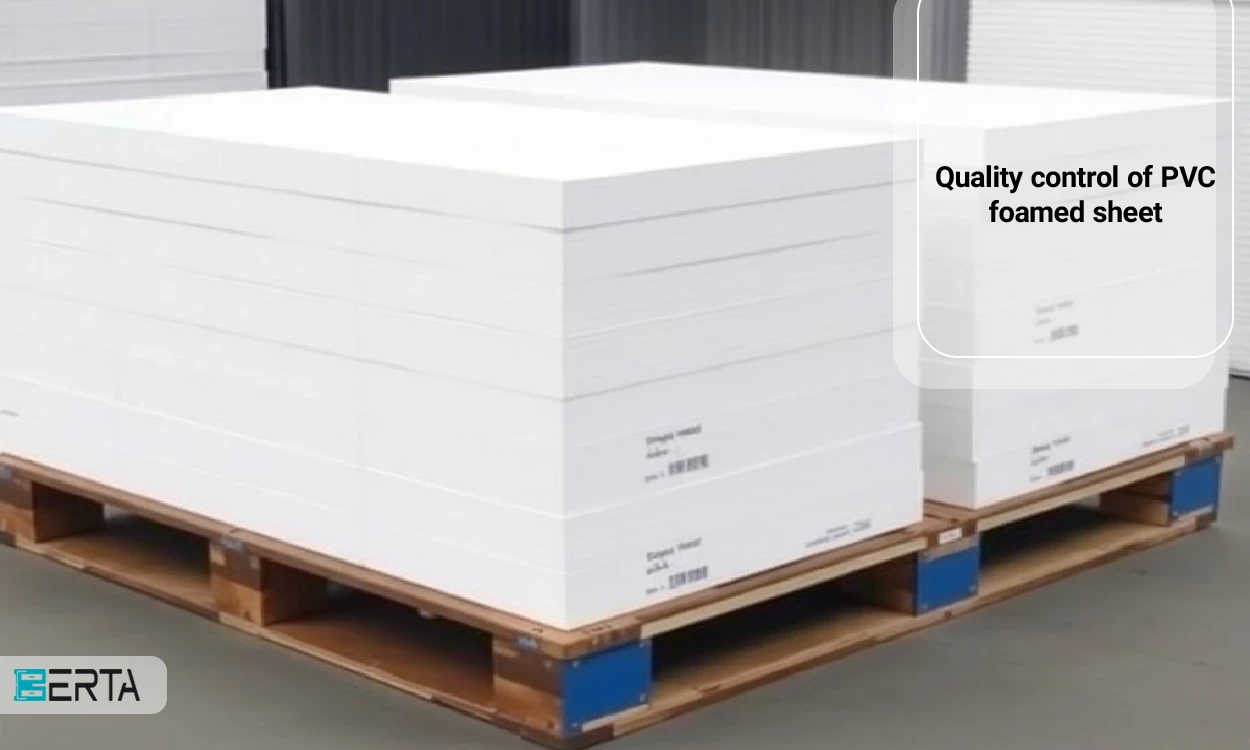In the world of decoration, beauty, and attention to detail are not only a choice but a necessity. Today, wooden items such as cabinets and shelves are widely made of artificial wood sheets such as chipboard and MDF. These sheets have become a popular choice in interior design due to their high capabilities and reasonable costs. However, one of the main challenges in using these sheets is the uneven and unsightly edges after cutting, which can lead to a decrease in the beauty and strength of the structure. To maintain the quality and beauty of the work, proper edge coverage using special tapes is an effective solution. In this blog, we will examine the importance of details in decoration and suitable solutions to improve the quality of structures.
What is PVC edge banding?
PVC edge banding is a decorative coating in the form of a strip that contributes to the beauty and functionality of wooden structures. By covering the surface of the cut sections, this tape hides the imperfections caused by the cut and gives it a unified and attractive appearance. In addition, the edge band acts as an insulator and prevents the penetration of water, insects, and other damaging factors. These features help increase the durability and longevity of the structure and ensure that your investment in interior decoration is well-maintained.
Variety of designs and colors
The variety of designs and colors of edge bands, similar to sheet metal cladding, is very high. The choice of color and design of these bands depends on the taste of the decorator and the customer. In many cases, an attempt is made to match the color and design of the edge band with the sheet metal cladding. But in some cases, various and even contrasting colors are used to add beauty and create contrast. These smart choices can help create a unique and pleasant space and ultimately improve the visual experience of the work.
Different types of edge bands
In the decoration market, different types of edge bands are available with various materials such as natural wood, acrylic, melamine, PVC, ABS, PET, and laser. But in recent years, PVC and melamine edge bands have become the most widely used options. In the following, we will examine PVC edge bands and examine their features and benefits in more detail. This band not only contributes to the beauty of the structure but also performs an excellent function in protecting cut edges and is considered a smart choice in modern decoration.
Features of PVC Edge Band
PVC edge band is a relatively thick and flexible PVC band that is known as one of the best options in the decoration world. This band is significantly more durable than other types of edge bands and has high resistance to abrasion, impact, heat, and ultraviolet rays. One of the prominent features of PVC edge band is that it does not easily deform or discolor and is completely odorless.
Working with PVC edge bands is much easier and faster than other adhesive edge bands. In addition, these bands are economically viable and have a wide variety of designs and colors. Also, PVC edge banding is recyclable and does not harm the environment, which makes it an environmentally friendly option.
This edge banding is available in one and two-millimeter thicknesses in the form of 200-meter (one-millimeter thick) and 100-meter (two-millimeter thick) rolls. It is also available in various widths, including 19, 20, 21, 22, 23, 28, 35, 40, 52 and 54 mm. Choosing the right width and thickness depends on the specific application of these strips and can help improve the quality and beauty of the work.
Granular Glue and Edge Banding
Before PVC edge banding became widely used, melamine edge banding was widely used in the decoration industry. The melamine tape itself contained glue, and after placing it on the piece, using an iron, the glue would melt and activate, and the two pieces would be connected. However, PVC edge tape does not contain glue, and to glue it, we need to use an edge banding machine and granule glue.
Granule glue or edge band glue is a type of hot melt adhesive that is produced in liquid and solid forms, including pillow, crystal, and rod forms. Granules are a type of polymer that is supplied in granular form and must be heated and melted for use. This glue melts at temperatures between 180 and 210 degrees Celsius and, after drying, connects two pieces. This glue is most commonly used in edge banding machines.
Granule glue has different types, including ethyl vinyl acetate (EVA) glue, polyolefin (PO) glue, and polyurethane (PU) glue. Each of these adhesives has a different melting point depending on the ingredients and chemicals used. In general, granular adhesives are made up of a variety of ingredients including resin, hardeners, solvents, strengtheners, diluents, stabilizers, fillers, and catalysts.
Advantages of Granular Glue
Among the prominent features of PVC granule glue are its high adhesive strength and drying speed, which have made it one of the most popular adhesives in various industries. This glue does not affect the color and coating of the workpiece and does not cause color changes. Also, granule glue does not harden or dry quickly and is resistant to moisture. Its good elasticity, non-clumping, and appropriate viscosity make it easy to work with.
Other advantages of granule glue include low weight, low odor, high tensile strength, easy application, the possibility of melting several times after cooling, low risk to the environment, high speed of implementation, waste recycling, and no fire hazard.
When using granule glue, it is important to note that the selected glue must be appropriate for the conditions of the machine and the work environment. Factors such as the temperature of the glue tank, the temperature of the cylinder, the operating speed of the machine, the ambient temperature, the humidity level, the dust concentration of the environment, and the type of edge banding machine play a fundamental role in selecting the appropriate granulated glue.
Key points in the edge banding process
- Temperature adjustment: Make sure that the temperature of the glue is set correctly so that the glue melts and activates properly.
- Choosing the right glue: Choosing the right granulated glue is very important according to the type of machine and environmental conditions.
- Pressure control: The pressure of the rollers must be adjusted so that the glue is evenly distributed on the edges.
- Precision in cutting: Edge banding cuts must be done carefully so that the edges are connected properly and no visual defects are created.
- Final polishing: After cutting, the edges must be polished well to have a beautiful and uniform appearance.
Conclusion
Finally, choosing PVC edge banding and using it in interior decoration not only contributes to the beauty and quality of the work but also maintains the strength and durability of the structure. Given the variety and positive features of this tape, it can be considered an ideal option in interior design. By observing key points in the edge bonding process and choosing the right materials, you can achieve impressive results in your decoration.




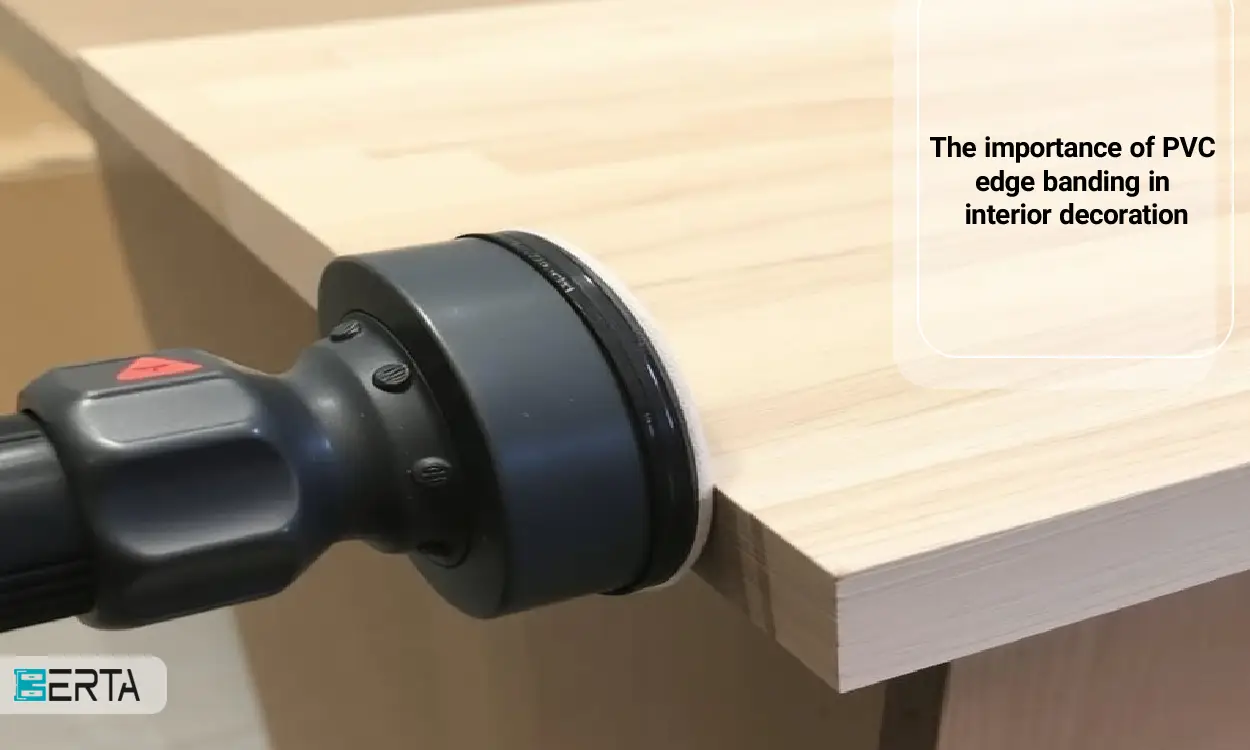
43456.jpg)
 Whatsapp
Whatsapp  Telegram
Telegram 

